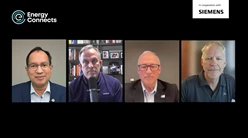Decentralised energy is the key to a sustainable net-zero grid
In an exclusive interview with Energy Connects ahead of World Utilities Congress 2025, David Auriau, CEO of Positive Zero, gives his views on how sustainable and decentralised solutions can support utilities in overcoming net-zero challenges.
- Positive Zero focuses on accelerating the transition to net-zero energy. What are the biggest challenges utilities face in adopting sustainable solutions, and how does Positive Zero help overcome them?
Right now, utilities are working with infrastructure that was never designed for the demands of a decarbonised future. Traditional grids are built for one-way power flow and centralised generation, not for intermittent renewables or distributed sources. Integrating clean energy often requires heavy capital investment in grid upgrades, with long timelines and uncertain returns.
At Positive Zero, we take a different approach. Our distributed generation solutions, like solar systems on rooftops and carports, bring power generation closer to where it’s used. This reduces transmission losses and allows utilities to defer costly infrastructure upgrades. Importantly, solar output aligns with peak summer demand, helping balance the grid when it’s under the most pressure.
Utilities typically build for peak loads, which leaves assets underused much of the year. Distributed infrastructure helps rewrite that equation. In regions like the Middle East, there’s strong potential for a bidirectional energy model, where businesses become ‘prosumers’ (producer/consumers), feeding surplus electricity back into the grid during peak periods. That surplus is often cheaper than traditional generation, creating economic and operational benefits for all sides.
Battery storage and smart EV charging adds even more flexibility, absorbing excess power, smoothing demand, and enhancing grid stability. Our energy efficiency services reduce baseline demand, while our electric mobility offerings add flexible load that can be shifted with smart charging.
It’s all part of our Decarbonisation-as-a-Service model. We build, finance, and operate these projects without upfront cost, removing CAPEX barriers and accelerating adoption. From Cooling-as-a-Service to EV charging infrastructure, we offer a seamless, integrated solution tailored to each client. We are also proudly aligned with ADNEC, the home of the 2025 World Utilities Congress - we are working together on a transformative project to bring distributed solar energy to the conference centre. Over the coming years, this project will provide clean energy to some of the globe’s biggest events. Through distributed and decentralised systems and a focus on enhancing the energy efficiency of businesses, we help to reduce pressure on core utilities and grid infrastructure.
- With advancements in smart grids, energy storage, and AI-driven efficiency, how is Positive Zero leveraging technology to optimise energy consumption and reduce waste?
Technology is a key enabler for optimising energy use. Positive Zero deploys smart, connected energy systems across our projects. Through IoT sensors and our proprietary platforms, all equipment and facilities can communicate and automated adjustments can be made to balance generation and consumption.
We also use artificial intelligence across operations. AI-driven analytics sift through data from equipment like chillers, HVAC units and lighting to detect anomalies and automatically adjust settings for comfort and efficiency. In a recent cooling-as-a-service retrofit, we achieved a 37% improvement in chiller efficiency – saving around 440,000kWh per year and cutting approximately 345 tonnes of CO2 emissions in the process.
Similarly, our smart algorithms adjust lighting and air-conditioning based on occupancy and even weather forecasts, ensuring energy isn’t used when it’s not needed. By blending smart grid technology, storage, and AI-driven controls, we help clients squeeze the most value out of every kilowatt-hour and virtually eliminate energy waste.
- As global policies push for decarbonisation, how do you see regulatory changes impacting the utilities sector, and how is Positive Zero positioning itself for future growth?
Governments in the Middle East and around the world are setting stricter emissions targets and introducing regulations to push the utilities sector toward cleaner energy. The UAE, for example, aims to triple renewable power capacity and double energy efficiency by 2030, in line with the outcomes of COP28 and COP29. These high-level goals are translating into concrete measures, such as stronger frameworks for renewable energy, net-metering changes and rules on grid integration, and new efficiency standards for buildings.
Positive Zero anticipated these shifts and built its strategy around them. Our model of delivering solar, efficiency, EV, and battery solutions via long-term service agreements is exactly what regulators want to encourage because it accelerates broader adoption of clean energy.
We engage with policymakers too, sharing insights from our projects to help shape practical rules. And when initiatives like net metering or rooftop solar programmes launch, we’re often among the first to put them into action. This supportive policy environment has enabled us to expand rapidly. In 2024 alone we signed 43 new solar projects across the Gulf region. We’ve also attracted major investment, such as a US$400 million commitment from BlackRock to fuel our growth. As regulations continue to tighten and new markets like Saudi Arabia open up for clean energy, we’re well positioned to be a key partner for utilities and businesses striving to meet evolving standards.





